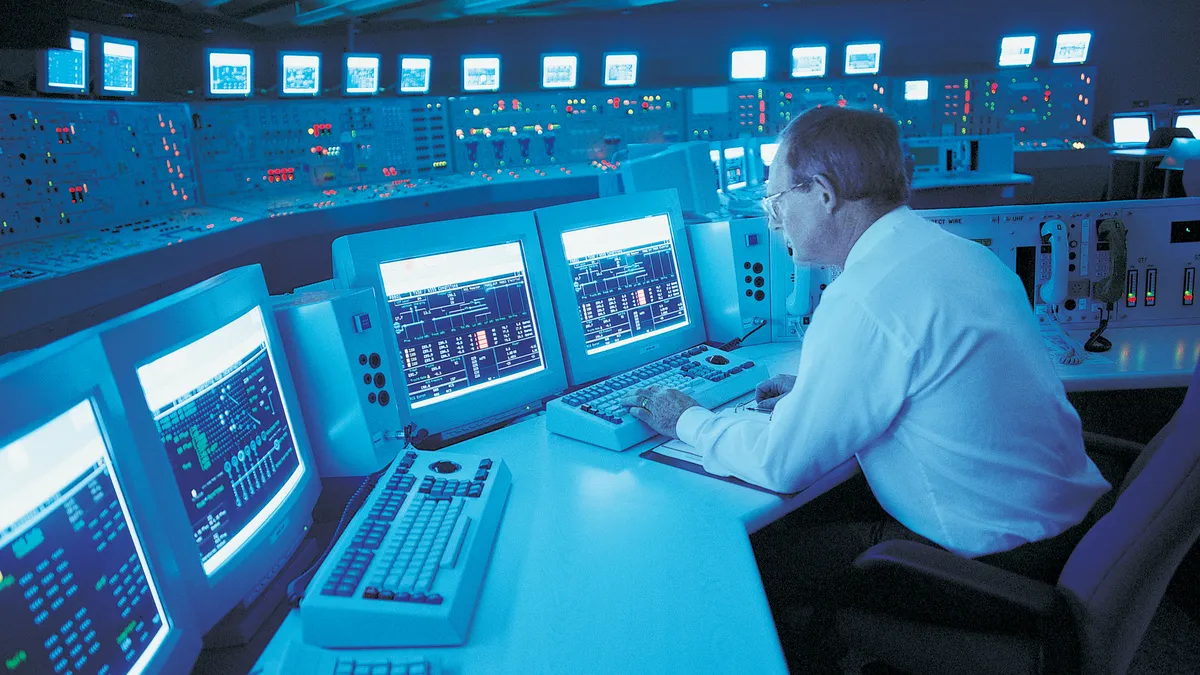Caleb Tomlin is the Electric Power Research Institute’s senior technical leader for transformative nuclear technology.
As leaders from nearly 200 countries gather in Dubai from Nov. 30 to Dec. 12 for the global climate conference COP28, one central focus will be on how the world is doing toward achieving the Paris Agreement’s climate goals, and what more needs to be done. According to new research, repurposing the infrastructure of a retired coal plant for new nuclear generation could both assist in meeting clean energy targets and benefit local communities.
Since 2000, more than 90 GW of U.S. coal units have been retired, driven in large part by efforts to meet decarbonization goals. By 2050, coal plants across 2,400 sites in 79 countries are expected to retire, representing 1,000 GW, according to new research by the Electric Power Research Institute, an independent, non-profit energy research and development organization. Power plant closures can adversely impact local communities that benefit from the facility through jobs and tax revenue. Until recently, newly constructed natural gas-fired power units often replaced decommissioned coal plants. Now governments around the world are encouraging redeveloping the sites into other forms of low- or zero-carbon power generation.
In most regions, the retirement of coal plants will require replacing the power and grid services in some form to meet grid reliability and end-user needs. Some of this need will be met with renewables such as wind and solar, but the firm baseload power typically supplied by coal plants will still be needed. While there are many options available for providing this replacement power, one being reviewed by many organizations is nuclear energy. The technology can provide carbon-free power and provide uninterrupted electricity generation.
While the design of the local transmission and distribution infrastructure, as well as the service territories and regulatory structure of various energy companies, will help drive the location of new energy generation, there is no specific requirement that new generation be located at, or even near the site of any retired generation. However, as EPRI research found, retired coal plants can provide numerous benefits and opportunities for use in deploying new nuclear generation.
The deployment of a nuclear plant on the site of a retired coal plant requires significant planning. Due to the regulatory and licensing activities that must be completed, there can be a gap in operations to account for decommissioning, remediation and new construction. As the report noted, this time gap can be planned for, but it is important that the planning activities begin early, preferably several years prior to scheduled retirement. Key activities that may need to be started as early as possible include:
- Site identification and characterization
- Technology and design selection
- Evaluating site infrastructure and existing assets (for potential repurposing)
- Securing land, transmission, and water rights and other permits
- Community outreach
According to the report, timeframes as low as three to five years and as high as ten or more years, excluding construction time, are likely. However, retired coal sites offer several existing infrastructure elements that can make a site more attractive. Among them:
- Grid interconnection: Coal plants have existing high-voltage power connection infrastructure, interconnection studies, a site permitting evaluation, land-use rights, and off-taker agreements in place to facilitate grid interconnection of future nuclear generation. Using the existing structures and connections can avoid the cost of new ones and save time to secure the necessary authorizations from jurisdictional authorities.
- Cooling water supply: While some new nuclear designs are expected to be able to use air cooling, it is likely that designs with thermal output like the coal plant it is replacing will make use of cooling water. Coal and nuclear plants require the ability to remove the heat generated and typically use substantial amounts of water. The ability to use the existing plant’s cooling systems is dependent on many factors, but of most value is the proximity to a significant amount of water, and possibly more importantly, the availability of water use rights.
- Land use: Existing land already owned by the owner-operator has the potential to support development of a new nuclear plant depending on the available space. Available land could include the land currently used by the coal plant itself after decommissioning is complete, or for larger sites, owner-operator property that is adjacent to the existing infrastructure.
Repurposing a retired coal plant could also boost local employment, the EPRI report found. Specifically, the local coal plant operators and maintenance staff may be retrained to support new nuclear development and operation. According to a 2022 report by the U.S. Department of Energy, the agency estimates about a two-to-one increase in staffing at a nuclear plant compared to staffing at a retired coal plant of the same size. This could provide additional employment opportunities, and drive further economic benefits for communities.
As countries and companies continue to work towards meeting aggressive clean energy targets, there are obvious synergies that can be applied. Whether it’s nuclear energy or other forms of low-carbon power generation, we can collectively build upon these shared learnings, driving collaboration as part of a reliable, affordable and equitable clean energy future.














